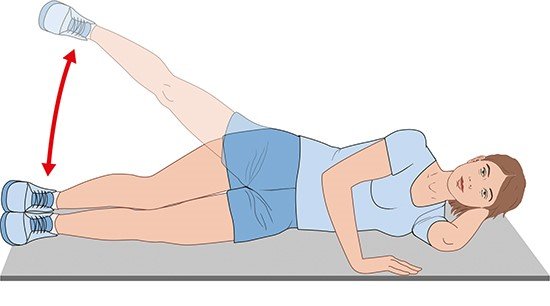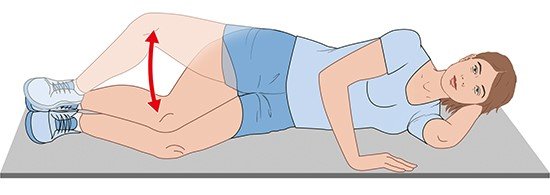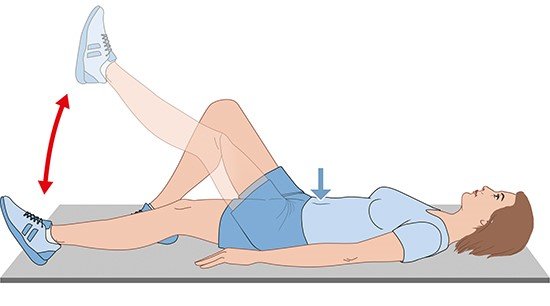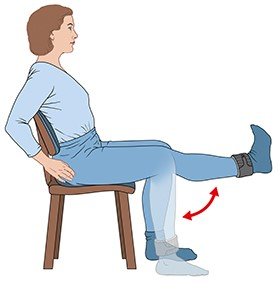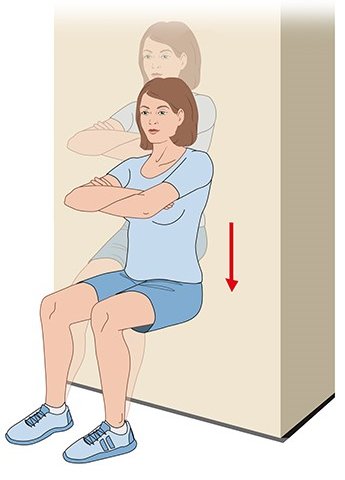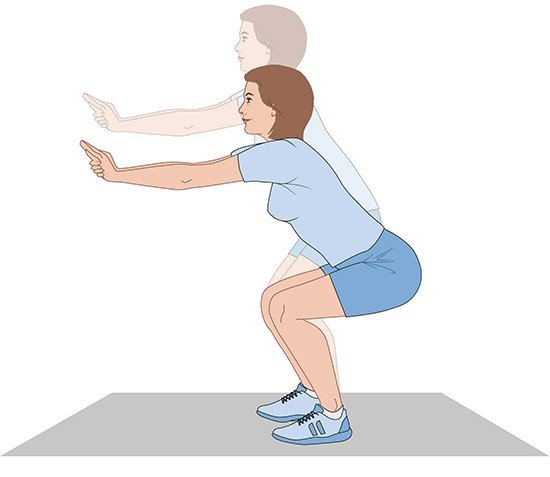Seven exercises to stabilize the knee
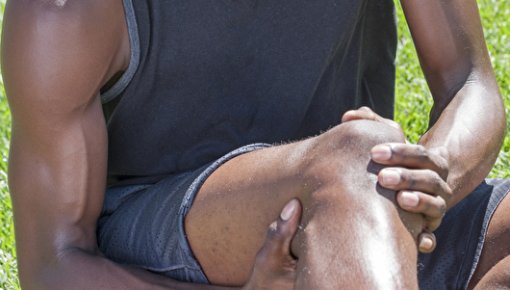
Strengthening the thigh and hip muscles can help to relieve pain in the front part of the knee. Here we describe seven suitable exercises that you can easily do in everyday life.
Strong muscles protect the knees by stabilizing the axis (alignment) of the legs. The hip, knee and ankle joint are usually positioned above and below each other in a straight vertical line. That puts the optimal amount of strain on the kneecap. If the muscles are weak, the pelvis may tilt and the knees and feet might lean inward. The exercises described below are suitable for strengthening these muscles.
Ideally you should do the exercises every two days. The instructions about sets of exercises and repetitions are meant to act as a guide only. The number of exercise sets you do will depend on your personal situation – for instance, how fit you are. The number of repetitions you do isn't as important as doing the exercises in a controlled way. Although the last repetition should be strenuous, you should still be able to do it properly. You can use the following as a general guide: Do 10 repetitions of each exercise on either side, and gradually increase to 20 repetitions – keeping the same total number of exercise sets.
If the front knee pain is severe, it’s a good idea to only do exercises for the hip muscles first (like the first two described here) and then add the knee exercises when the pain has become milder.
